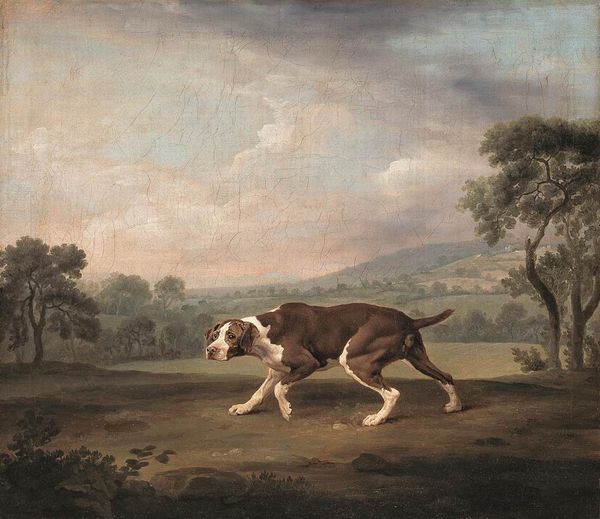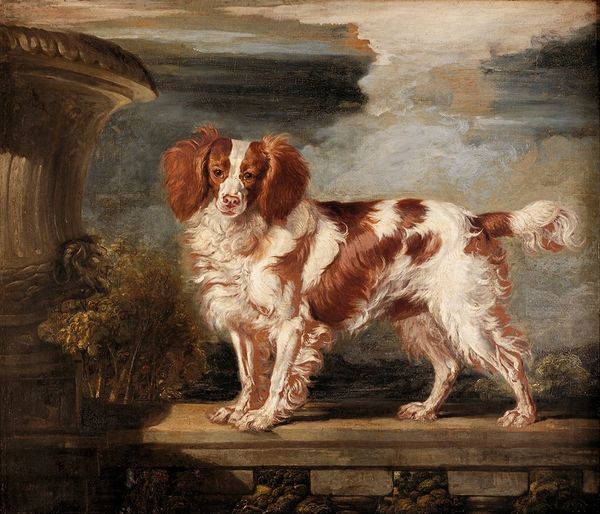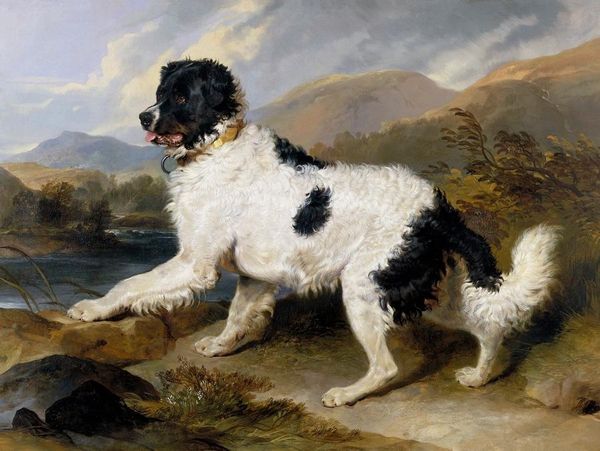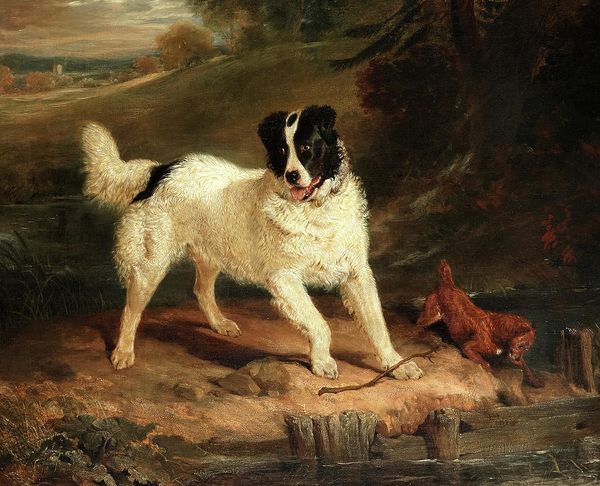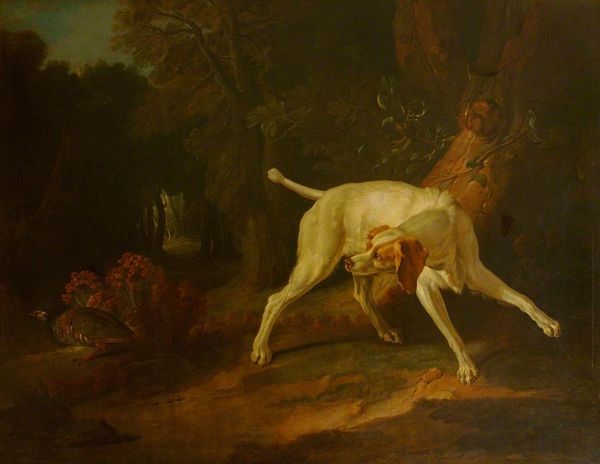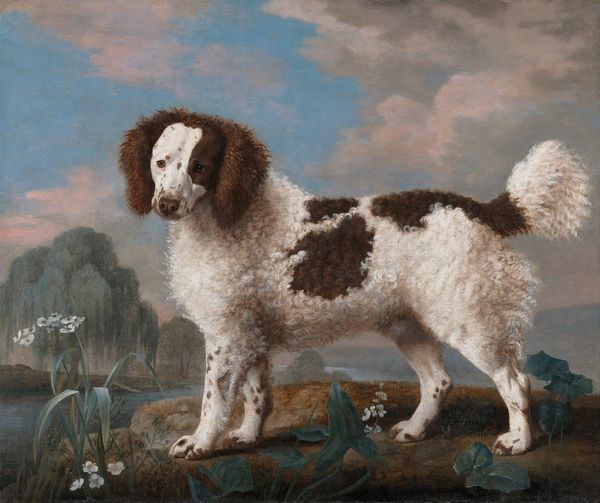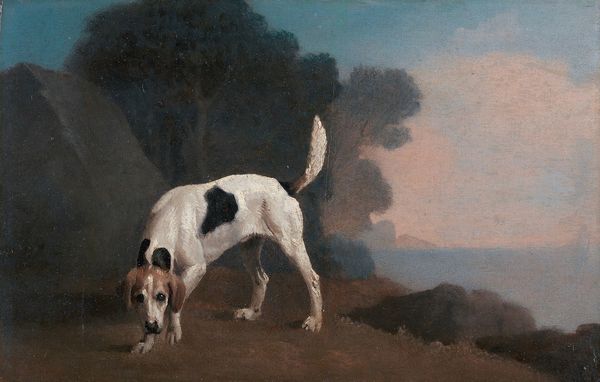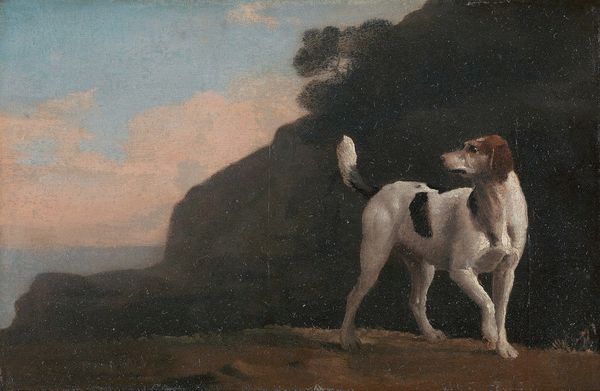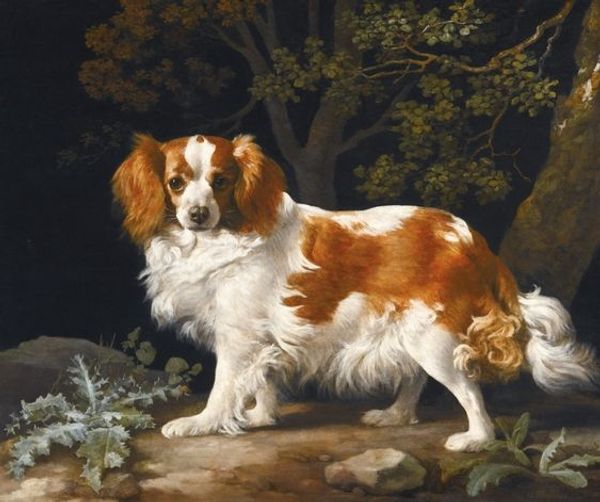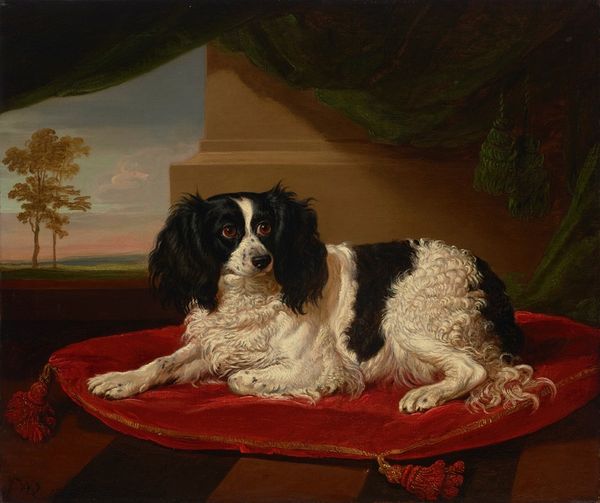
painting, oil-paint
#
baroque
#
painting
#
oil-paint
#
landscape
#
oil painting
#
genre-painting
#
realism
#
rococo
Copyright: Public domain
Curator: My eye is immediately drawn to the intense focus of the pointer—it feels charged with anticipation. Editor: Yes, that tension is beautifully rendered, isn't it? We're looking at "A Pointer and Partridges", an oil painting by Jean-Baptiste Oudry. Although undated, it encapsulates the rococo aesthetic in its depiction of a hunting scene. Curator: The dog feels almost allegorical, a representation of unwavering loyalty, but also of structured hierarchy—an intrinsic part of societal codes reflected by hunting and breeding standards. I'm getting a complex web of status, nature, and controlled order. Editor: I agree completely. Dogs, especially hunting dogs, have consistently represented status. And beyond class readings, the subdued color palette juxtaposed with the vibrant wildflowers speaks to a controlled harmony. It is nature, but a manicured version where hierarchies flourish both literally and figuratively. Curator: The placement of the partridges below the dog certainly drives that point home. Visually, it's a stark representation of the food chain. What symbols are evident, aside from the overt hunter-hunted relationship? Editor: Oudry's use of what are, ostensibly, very standard compositions, points toward the artistic restrictions during that time. But maybe that's not a negative thing because, with those tight constrictions, an incredibly interesting piece emerges as well. It shows that we don't necessarily need total freedom to create engaging social commentary, and perhaps it argues that such restrictions invite creative solutions that are far more insightful than otherwise would've emerged. Curator: Absolutely, Oudry, like other artists of his era, worked within a complex system of patronage and artistic conventions. That balance, I believe, is essential for a full appreciation of art from this period. I can’t deny its ability to prompt broader thinking, though. Editor: This dog portrait really lingers in the mind, far more than I would have expected from a Rococo period piece. It asks the very question that we’re discussing right now! Curator: A painting is often the most articulate cultural mirror that we have. Thank you for that wonderful insight.
Comments
No comments
Be the first to comment and join the conversation on the ultimate creative platform.
